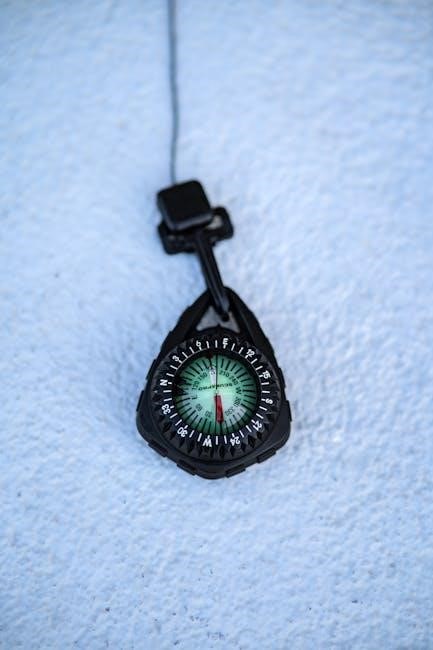
Dive into the mystical world of the Pathfinder Witch, a class steeped in arcane power and enigmatic patrons. This comprehensive guide illuminates the path for aspiring Witches, exploring their unique abilities, spellcasting prowess, and the vital role of familiars. Uncover the secrets to crafting a potent and versatile Witch character.
The Witch in Pathfinder stands apart as an Intelligence-based prepared arcane spellcaster, drawing power from a mysterious Patron. Unlike the Wizard, whose magic is purely academic, the Witch’s magic is intertwined with a chosen Patron, granting unique spell list options reminiscent of the Sorcerer. This connection infuses the Witch’s abilities with a distinct flavor, setting them apart from other arcane casters.
Witches excel in a variety of roles, from debuffing enemies with potent hexes to controlling the battlefield with carefully chosen spells. Their versatility is further enhanced by a wide array of Patrons, allowing them to access spell lists traditionally associated with divine or primal magic. This adaptability makes the Witch a valuable asset to any adventuring party.
The Witch’s defining feature lies in their hexes, spell-like abilities that offer a range of tactical options. From debilitating foes with Evil Eye to manipulating fate with Misfortune, hexes provide the Witch with unparalleled control over the flow of combat. Furthermore, the Witch’s bond with their familiar grants them unique advantages, solidifying their position as masters of arcane secrets and mystical connections;
Core Class Features of the Witch
The Witch class in Pathfinder boasts a unique set of core features that define their playstyle and capabilities. As an Intelligence-based spellcaster, Witches rely on their intellect to prepare and cast spells, drawing from a diverse list influenced by their chosen Patron. Their spellcasting proficiency is further enhanced by their familiar, a magical companion that grants them additional abilities and serves as a conduit for their power.
Hexes are the quintessential feature of the Witch, providing them with a range of spell-like abilities that can be used to debuff enemies, control the battlefield, or support allies. These hexes are often save-dependent, requiring opponents to resist their effects, making the Witch a formidable force in combat.
Beyond spellcasting and hexes, Witches possess other notable features, including a strong emphasis on knowledge skills, reflecting their studious nature and connection to arcane lore. They also gain access to unique class feats that further enhance their abilities and customize their playstyle. With a combination of potent spells, versatile hexes, and a loyal familiar, the Witch is a force to be reckoned with in any Pathfinder campaign.
The Witch’s Patron and Spell List Versatility
A defining characteristic of the Witch class is their connection to a powerful Patron, a mysterious entity that grants them access to arcane power. The choice of Patron not only shapes the Witch’s theme and flavor but also determines the spell list they can access, providing unparalleled versatility in spellcasting.
Unlike other spellcasters who are limited to a specific tradition, Witches can draw upon various spell lists depending on their Patron. This allows them to tailor their spell selection to suit their preferred playstyle, whether it be focused on healing, debuffing, control, or even blasting. A Witch with a healing-focused Patron can even serve as a passable replacement for a divine spellcaster, while a Witch with a more offensive Patron can unleash devastating spells upon their foes.
The versatility afforded by the Patron system makes the Witch a highly adaptable class, capable of filling a variety of roles in the party. Whether you prefer to support your allies, hinder your enemies, or unleash arcane fury, there is a Patron to suit your needs. This flexibility, combined with their potent hexes and loyal familiar, makes the Witch a truly unique and powerful spellcaster in the Pathfinder universe.
Understanding Witch Hexes: The Defining Feature
Beyond their spellcasting, Witch Hexes are the defining feature of the class, setting them apart from other arcane casters. Hexes are spell-like abilities that Witches gain as they level, offering a wide range of tactical options and utility both in and out of combat. These abilities often focus on debuffing enemies, controlling the battlefield, or providing support to allies, making the Witch a versatile and powerful force.

One of the key aspects of Hexes is their persistent nature. Many Hexes, like Evil Eye and Misfortune, impose penalties on enemies, hindering their attacks, defenses, or saving throws. These effects can significantly weaken foes, making them vulnerable to your party’s attacks. Other Hexes, such as Slumber, can incapacitate enemies entirely, removing them from the fight for a crucial duration. Furthermore, some Hexes, like Ward, offer long-term benefits to allies, such as increased saving throws or armor class.
Hex Cantrips provide consistent tactical options. The strategic use of Hexes is essential for maximizing the Witch’s effectiveness. By carefully selecting and applying Hexes, Witches can control the flow of battle, protect their allies, and cripple their enemies, making them a valuable asset to any adventuring party.
Best Witch Archetypes: Winter Witch, Hagbound, and Gravewalker
Pathfinder offers a variety of Witch archetypes, each providing a unique spin on the class’s core abilities. Among the most compelling are the Winter Witch, Hagbound, and Gravewalker, each catering to distinct playstyles and thematic preferences.
The Winter Witch, as the name suggests, focuses on cold-based magic and control. They gain access to powerful ice spells and abilities, allowing them to freeze enemies, create blizzards, and command the elements of winter. This archetype is perfect for players who enjoy blasting and battlefield control, turning the environment against their foes.
The Hagbound archetype embraces the darker, more primal aspects of Witchcraft. Hagbound Witches forge a deep connection with the mystical hags, gaining access to their lore, spells, and even some of their physical traits. This archetype is ideal for players who want to delve into the more sinister side of magic, using curses, transformations, and dark pacts to achieve their goals.
Finally, the Gravewalker archetype specializes in necromancy and the manipulation of the undead. Gravewalker Witches can raise skeletons, command zombies, and channel negative energy. This archetype is particularly effective in campaigns with a strong focus on undead enemies, allowing the Witch to control and exploit their weaknesses.
Effective Witch Builds: Debuffs, Control, and Blasting

The Witch class in Pathfinder lends itself to a variety of effective builds, each capitalizing on different aspects of the class’s spell list and hexes. Three popular and potent build archetypes are debuff-focused, control-oriented, and blasting-centric Witches.
Debuff Witches excel at weakening enemies, hindering their abilities, and making them vulnerable to attacks. They rely heavily on hexes like Evil Eye, Misfortune, and Slumber to cripple foes, reducing their attack rolls, saving throws, and even rendering them unconscious. This build is excellent for parties that focus on sustained damage, as the debuffs ensure that enemies are easier to hit and take down.
Control Witches specialize in manipulating the battlefield and limiting enemy movement. They use spells like Hold Person, Web, and Stinking Cloud to restrict enemy actions, allowing the party to focus on specific targets or escape dangerous situations. Hexes like Slumber also contribute to control, effectively removing enemies from the fight temporarily.
Blasting Witches, while not as common, can still be effective with the right patron and spell selection. Winter Witches, in particular, can excel at dealing area-of-effect damage with cold-based spells. By focusing on spells like Fireball (reflavored as ice), Cone of Cold, and Ice Storm, Blasting Witches can unleash devastating attacks on groups of enemies.
Key Ability Scores and Skills for Witch Characters
When creating a Witch character in Pathfinder, careful consideration must be given to ability scores and skill selection. These choices will significantly impact the Witch’s effectiveness in combat, social situations, and exploration.
Intelligence: As a prepared arcane spellcaster, Intelligence is the Witch’s most crucial ability score. It determines the number of spells a Witch can prepare each day, the highest level of spells they can cast, and the DCs of their spells and hexes. Maximize Intelligence to ensure potent spellcasting.
Constitution: Witches are typically frail, making Constitution vital for survival. A higher Constitution score provides more hit points, increasing survivability in combat. It also improves Fortitude saves, protecting against debilitating effects like poison and disease.
Dexterity: While not as crucial as Intelligence or Constitution, Dexterity contributes to Armor Class, Reflex saves, and initiative. A decent Dexterity score helps Witches avoid attacks, react quickly in combat, and evade area-of-effect spells.
Skills: Key skills for Witches include:
- Spellcraft: Essential for identifying spells being cast and counterspelling.
- Knowledge (Arcana): Provides knowledge about magic, magical creatures, and planes.
- Fly: Crucial for any Pathfinder character, especially for a ranged character like the Witch.

Feat Selection for Witches
Selecting the right feats is crucial for optimizing a Witch’s capabilities in Pathfinder. Feats can enhance spellcasting, improve defenses, and provide access to unique abilities. Prioritize feats that complement your chosen archetype and playstyle.
Spellcasting Feats:
- Spell Focus/Greater Spell Focus: Increase the DC of your spells, making them harder to resist.
- Spell Penetration/Greater Spell Penetration: Overcome spell resistance, ensuring your spells affect more enemies.
- Quicken Spell: Cast spells as swift actions, allowing for more actions in combat.
- Selective Spell: Exclude allies from area-of-effect spells.
Hex-Enhancing Feats:
- Accursed Hex: Allows a second attempt to affect a target with a failed hex.
- Cackle: Extends the duration of certain hexes.
Defensive Feats:
- Toughness: Increases hit points, improving survivability.
- Iron Will: Grants a bonus on Will saves, protecting against mind-affecting effects.
- Improved Initiative: Allows the Witch to act earlier in combat.
Utility Feats:
- Craft Wondrous Item: Allows the Witch to create magical items.
- Brew Potion: Enables the creation of potions for healing or utility.
Consider feats that synergize with your Witch’s patron and chosen spells. A Winter Witch, for example, might benefit from feats that enhance cold-based spells.
Familiars and Their Importance to Witches
A Witch’s familiar is more than just a pet; it’s an extension of their magical self, a source of power, and a loyal companion. The familiar grants various benefits, including skill bonuses, increased perception, and the ability to deliver touch spells.
Familiar Abilities:
- Skill Bonuses: Familiars provide bonuses to specific skills, such as Perception, Stealth, or Diplomacy.
- Alertness: The Witch gains the Alertness feat when the familiar is within arm’s reach.
- Evasion: The familiar gains the Evasion ability, making it harder to damage with area-of-effect attacks.
- Deliver Touch Spells: The familiar can deliver touch spells for the Witch, allowing for safer spellcasting.
Choosing a Familiar:
The choice of familiar depends on the Witch’s playstyle and needs. Common choices include:
- Cat: Stealth and Perception bonuses.
- Raven: Knowledge and Perception bonuses.
- Lizard: Climb and Stealth bonuses.
- Toad: Fortitude saves and poison resistance.
Bonding with Your Familiar:
Treat your familiar well, and it will serve you faithfully. Protect it in combat, and use its abilities to your advantage. A strong bond with your familiar is essential for a successful Witch.
Witch Spell Selection Strategies
Selecting the right spells is crucial for a Witch’s effectiveness. Focus on spells that complement your chosen patron and playstyle. Prioritize spells that offer versatility, control, and debuffs.
Key Spell Categories:
- Debuffs: Spells like Evil Eye, Misfortune, and Bestow Curse weaken enemies.
- Control: Spells like Hold Person, Sleep, and Web disable foes;
- Buffs: Spells like Haste, False Life, and Mage Armor enhance allies.
- Healing: With the right patron, access healing spells to support the party.
- Utility: Spells like Invisibility, Fly, and Teleport provide versatility.
Spell Level Progression:
As you level up, gradually replace lower-level spells with more potent options. However, retain a few essential lower-level spells for specific situations.
Patron Spell Lists:
Consider your patron’s spell list when making selections. Certain patrons grant access to unique and powerful spells that align with their theme.
Adaptability:
Prepare a diverse selection of spells to handle various encounters. Adapt your spell choices based on the campaign setting and anticipated challenges.
Synergy:
Choose spells that synergize well with your hexes and familiar abilities for maximum impact.
Pathfinder 2e Witch Deep Dive
The Pathfinder 2nd Edition Witch has undergone significant evolution, offering a richer and more thematic play experience. The Witch in 2e is an Intelligence-based prepared arcane caster, emphasizing strategic spell selection and cunning tactics. A defining feature is the Witch’s connection to a powerful Patron, granting unique spells and abilities.
Key Changes in 2e:
- Patron Focus: Patrons are more integral, shaping spell lists and character themes.
- Familiar Emphasis: Familiars remain crucial, granting abilities and serving as conduits for spells.
- Hex Cantrips: Powerful Hex Cantrips offer consistent tactical options.
- Remaster Updates: The Remaster book introduced further refinements to the class.
Building a 2e Witch:
Consider your Patron carefully, as it dictates your spellcasting style. Choose an ancestry without an Intelligence flaw to maximize your spellcasting potential. Focus on spells that provide control, debuffs, and utility.
Strategic Play:
The 2e Witch excels at manipulating the battlefield and weakening enemies. Utilize Hexes and spells to control the flow of combat and support your allies. Adapt your spell selection to counter specific threats and exploit enemy weaknesses.
